
Eucalyptus is a genus of more than 700 species of flowering plants in the family Myrtaceae. Most species of Eucalyptus are trees, often mallees and a few are shrubs. Along with several other genera in the tribe Eucalypteae, including Corymbia and Angophora, they are commonly known as eucalypts. Plants in the genus Eucalyptus have bark that is either smooth, fibrous, hard or stringy, the leaves have oil glands, and the sepals and petals are fused to form a "cap" or operculum over the stamens. The fruit is a woody capsule commonly referred to as a "gumnut".
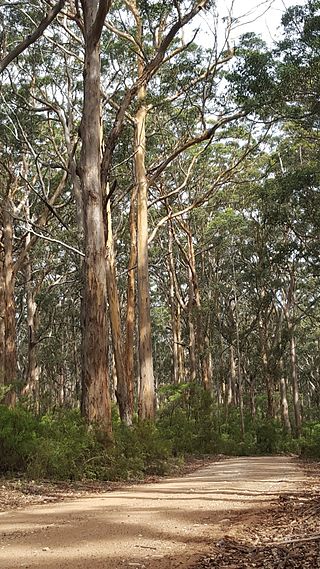
Eucalyptus diversicolor, commonly known as karri, is a species of flowering plant in the family Myrtaceae and is endemic to the south-west of Western Australia. It is a tall tree with smooth light grey to cream-coloured, often mottled bark, lance-shaped adult leaves and barrel-shaped fruit. Found in higher rainfall areas, karri is commercially important for its timber.

Ocotea bullata, is a species of flowering tree native to South Africa. It produces very fine and valuable timber which was formerly much sought after to make furniture. Due to over-exploitation it is now a protected species. Other names for it are Cape Walnut, Cape laurel, and laurel wood. The name "stinkwood" comes from a strong smell that is released when it is fresh felled.
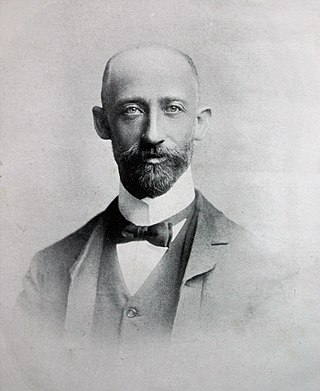
Thomas Robertson Sim was a botanist, bryologist, botanical artist and Conservator of Forests in Natal, best known for his monumental work The Forests and Forest Flora of the Colony of the Cape of Good Hope which appeared in 1907. He was the eldest of five children of John Sim (1824–1901), a noted bryologist and Isabella Thomson Robertson (1823-).
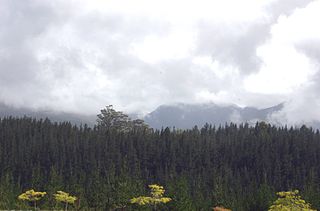
Saasveld Forestry College is a South African college for the training of foresters, situated on the Garden Route in the Western Cape between George and Knysna. Before moving to its present location in 1932, it was located at Tokai, Cape Town.
Charles Edward Lane Poole was an English Australian forester who introduced systematic, science-based forestry practices to various parts of the Commonwealth, most notably Australia.

Johannes Elias Spurgeon Henkel aka John Spurgeon Henkel, was a South African botanist and forester. He was deeply involved in the conservation of forests in southern Africa and the introduction of exotic species such as Eucalyptus to Zululand.
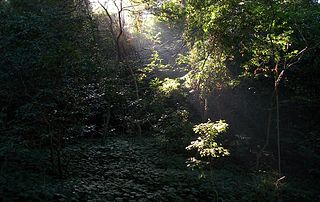
Areas of forest which grow in KwaZulu-Natal, South Africa mostly on south facing slopes in higher rainfall areas, and along the humid coastal areas. Different types of forest can be identified by their species composition which depends mostly on the altitude, latitude and substrate in which they grow. South facing slopes are favourable for the development of forest as they are more shaded, and therefore cooler and retain more moisture than the northern slopes. The extra moisture on the south slopes is not only favoured by forest trees, but also helps to prevent or subdue wildfires. Fires can also be blocked by cliff faces and rocks or boulders on these slopes, and by streams or rivers at the base of the slopes. The coastal regions are conducive to forest formation, because of high rainfall and humidity which are favoured by forest trees and also help to prevent or subdue fires. The rivers of the coastal areas are also broader than further inland, which may often prevent fires from spreading long distances, and fires generally burn uphill and therefore more often away from areas at low altitude.
Christopher Harison was a British military officer and forestry official in South Africa. He served as Conservator of Forests and was an authority on forest practice in the region.

Cape Flats Sand Fynbos (CFSF), previously known as Sand Plain Fynbos, is a critically endangered vegetation type that occurs only within the city of Cape Town. Less than 1% of this unique lowland fynbos vegetation is conserved.

The Madras Forest Department, now officially, Tamil Nadu Forest Department, is a government department of Tamil Nadu. The department is responsible for managing all the protected areas and forests plus environmental and wildlife related issues of Tamil Nadu state in South India. The objective of the Tamil Nadu Forest Department is to conserve biodiversity and eco-systems of forests and wilderness areas to ensure water security and food security of the state.

Cecilia is a section of the Table Mountain National Park on the lower eastern slopes of Table Mountain in Cape Town, located just to the south of Kirstenbosch National Botanical Garden. It was previously used for commercial logging and known as Cecilia Forest or Cecilia Plantation, but has now been given protected status and integrated into the National Park.

Comte Médéric de Vasselot de Régné was a French-born forest officer trained at the National School of Forestry in Nancy, France, and appointed as Superintendent of Woods and Forests in South Africa in 1880. Médéric and his elder brother Marin Gabriel were sons of Jean Gabriel Charles Auguste de Vasselot de Régné (1780–1842) and Eugénie Gabrielle Elisabeth Selima Vasselot de la Chesnaye (1807–1879).

Tokai Park, previously known as "Tokai Forest", is a small wing, about 600 ha, of the greater Table Mountain National Park in Cape Town, South Africa. Tokai Park is made up of two sections: upper and lower Tokai Park. Lower Tokai Park is flat, and characterized by the threatened Cape Flats Sand Fynbos. Upper Tokai Park is on the slopes of Constantiaberg Mountain, and consists of conservation area as well as the Tokai Arboretum. Upper Tokai Park is characterized by Peninsula Granite Fynbos, Peninsula Sandstone Fynbos and Afromontane Forest and noted for its diversity.
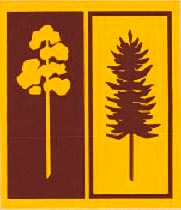
The Forests Commission Victoria (FCV) was the main government authority responsible for management and protection of State forests in Victoria, Australia between 1918 and 1983.
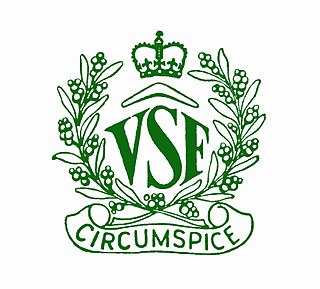
The Victorian School of Forestry (VSF) was established in October 1910 at Creswick, in the Australian state of Victoria. It was located at the former Creswick Hospital, built in 1863 during the gold rush. The creation of VSF was one of the many recommendations of a Royal Commission held between 1897 and 1901 into forest degradation. The first tertiary forestry school in Australia, VSF was administered by the Forests Commission Victoria (FCV) until 1980, when VSF amalgamated with the University of Melbourne to become that institution's School of Ecosystem and Forest Sciences. From 1910 to 1980, 522 students completed the Diploma of Forestry at VSF.
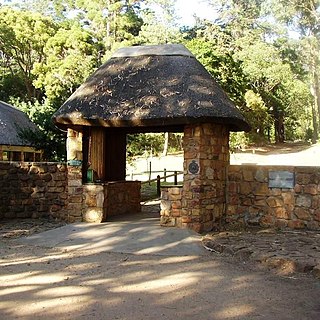
The Tokai Arboretum was the first large-scale silviculture experimental station in Cape Town, South Africa. The area of the main Arboretum, at Tokai Park, is 14 ha. Several adjacent compartments extend the area to 26 ha. The Arboretum was declared a National Monument in 1985, on its 100th anniversary. It contains stands of Eucalyptus and other trees from the original silviculture experiments in South Africa. In the 1990s a Gondwana Garden was created to display the plants typical of the Cape 100 million years ago.
Forestry in Sudan includes both traditional gatherers of firewood and producers of charcoal—the main sources of fuel for homes and some industries—and a modern timber and sawmilling industry, the latter government-owned. Forestry activities started with Condominium rule in 1899, when the government commissioned an Indian forester to produce a comprehensive report on the state of forests in the country. As a result, the Woods and Forests Ordinance was published in 1901, and the Department of Woodlands and Forests established. The First Forest Act replaced the ordinance in 1908, and legislation continued to evolve over the next century.
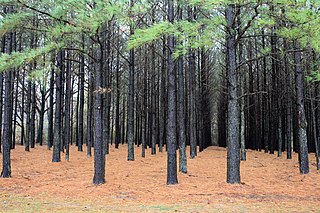
A tree plantation, forest plantation, plantation forest, timber plantation or tree farm is a forest planted for high volume production of wood, usually by planting one type of tree as a monoculture forest. The term tree farm also is used to refer to tree nurseries and Christmas tree farms.
This article deals with forest conservation in South Africa.


















